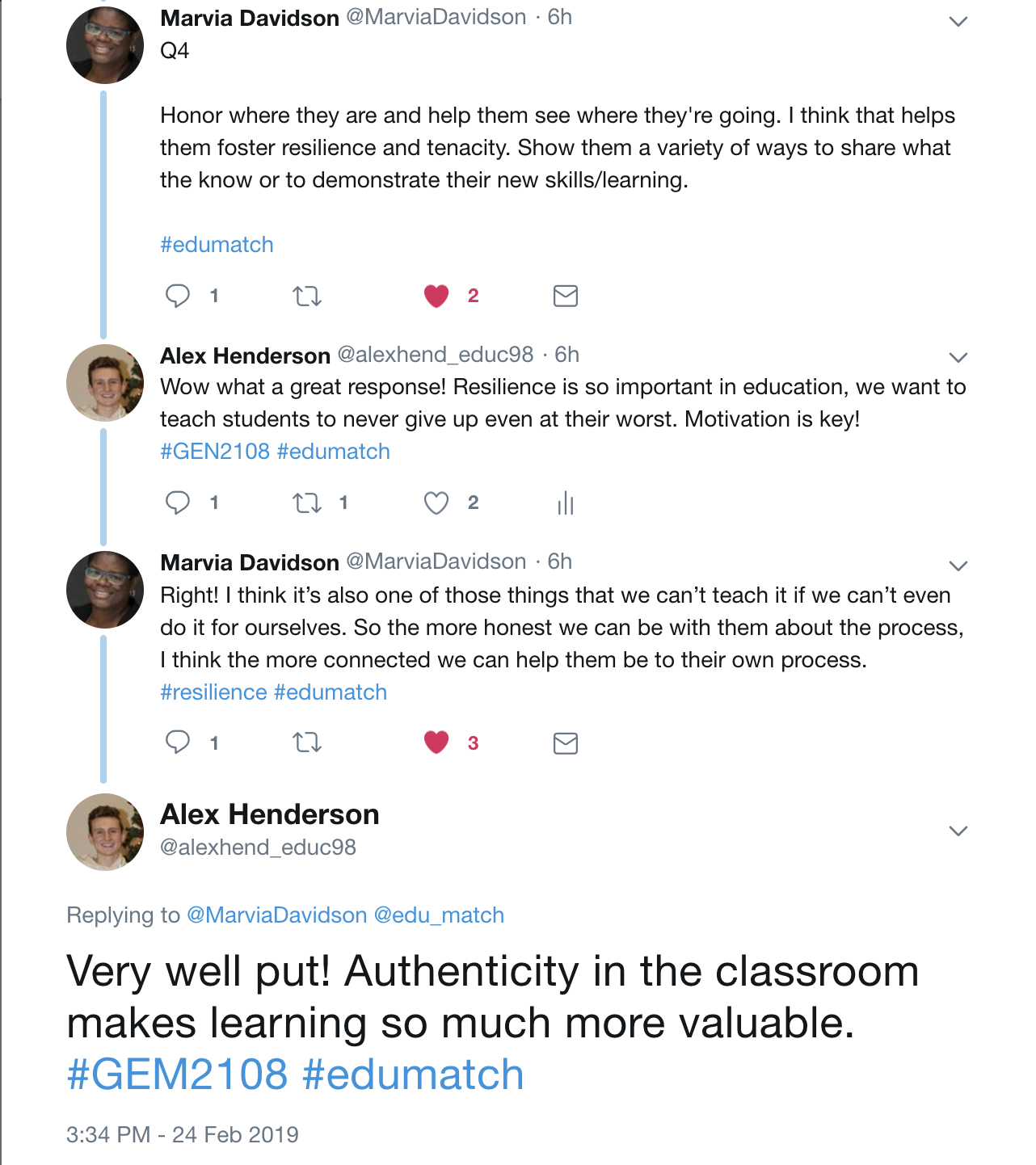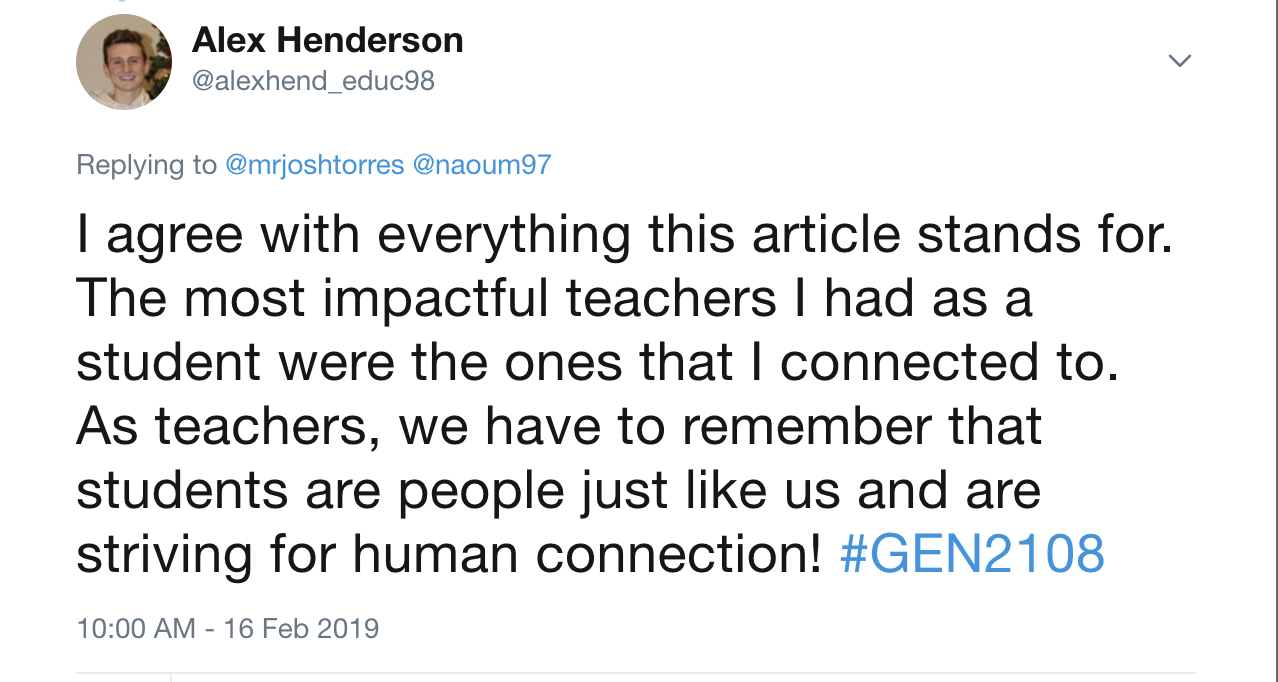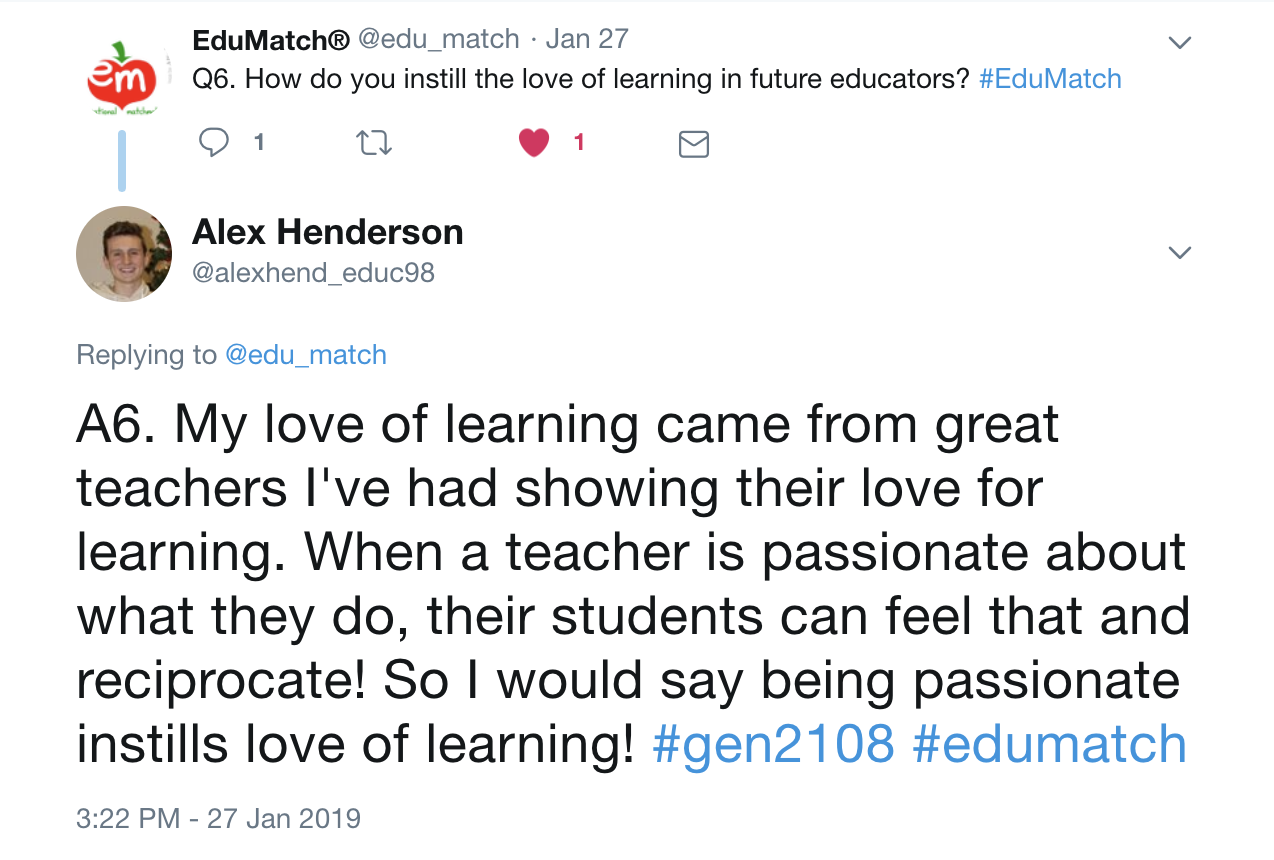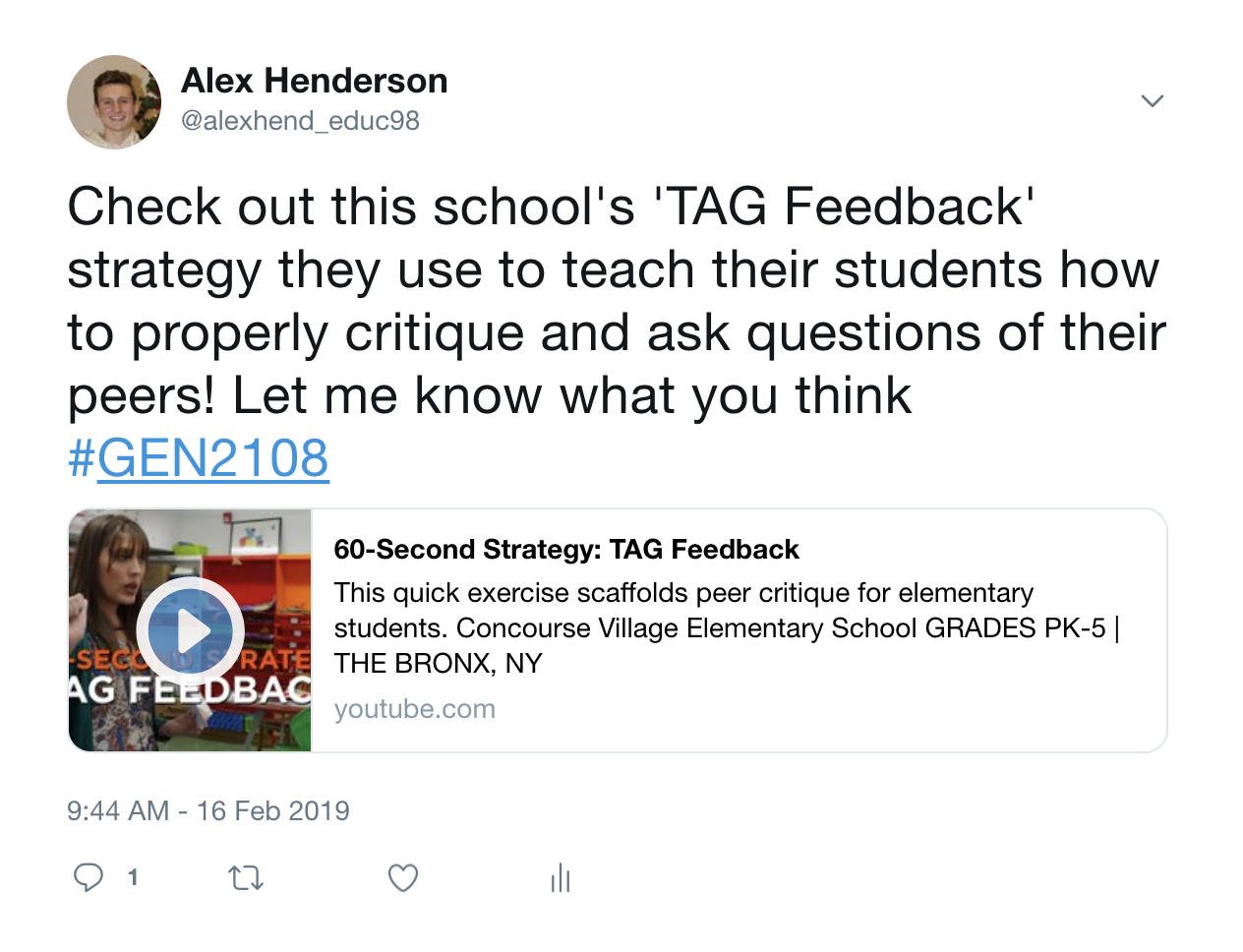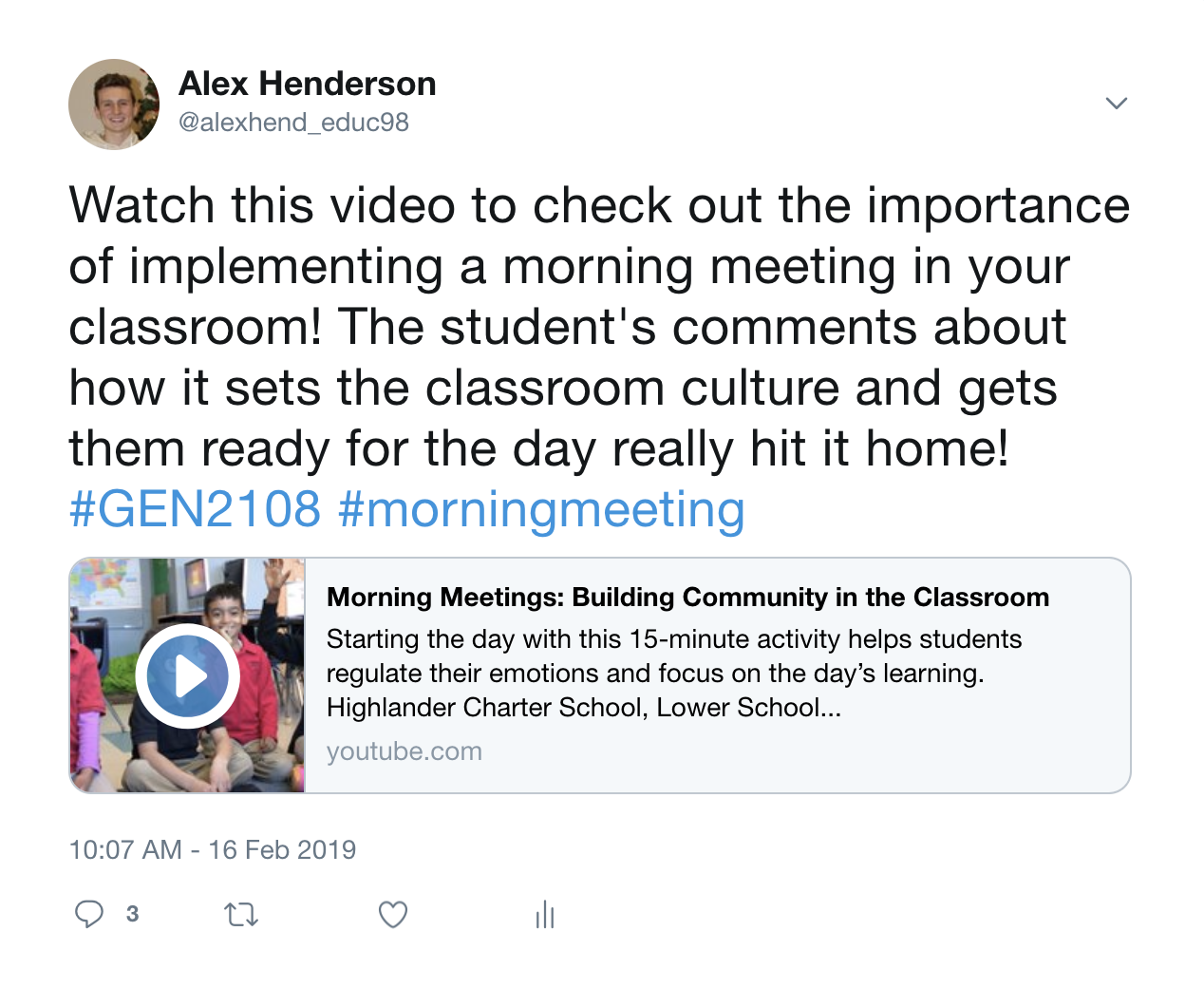Over the past eight or nine weeks, I have gained so much new information about a number of different things. From the sustainable development goals to instructional technology, the knowledge I have gained is incredible! In this post, I decided I would reflect on this knowledge and include some links so you can gain from this bank of learning as well! In this post I will focus mainly on…
- Computational Thinking
- Twitter as a Personal Learning Network (PLN)
- Blogging and its versatility
- Global Learning
Computational Thinking
Computational thinking is a way of breaking down problems and is broken into more simple parts and then working through them to find patterns, similarities, and algorithms. Computational thinking can be broken down into four main steps:
- Decomposition: Breaking down a problem into smaller parts
- Pattern Recognition: Identifying trends or patterns
- Abstraction: Identify similarities and differences
- Algorithmic Design: Designing step by step instructions to be used for similar problems
Computational thinking is becoming a very important part of instruction in modern classrooms. Computational thinking prepares children for the science, technology, engineering, arts, and mathematics heavy occupations that are on the rise.
Computational thinking is so versatile that it can be implemented in all subjects across all grade levels! As long as the main idea of the four-step process stays intact, the teacher can differentiate it for each of their lessons. Watch this video to see how a teacher uses computational thinking in math!
As a future educator, I hope to become educated on how to implement this form of thought process in my own classroom so that my students will be well prepared for a world in which this style of thinking is in high demand!
Twitter as a Personal Learning Network
I have a previous blog post in which I reflected on my thoughts about Twitter and its uses as a learning space and I will link that here! However, I just wanted to include this in my post because I truly believe Twitter is a great place for future educators to learn about their craft and discuss relevant topics with other professionals. Because Twitter is so accessible, it allows people to communicate and learn from one another who might have never spoken to one another. This allows for greater global understanding on the part of educators as well which they can then use to educate their students.
You can follow my PLN journey here!
Blogging

Throughout these past weeks, I have used this blog to learn and reflect on that learning. Being able to research and then write down your thoughts on a site is such a useful tool as it allows the content you are learning to become instantly relevant and accessible to others who might come in contact with your blog.
Blogging, however, is not only useful for a teacher or future teacher to learn about their profession and reflect on it but also for their students! Blogging as an instructional tool is one of the most interesting things I think I have learned in these past few months as I feel it teaches so many skills through one activity. By having students create their own blog, teachers can have students research and reflect on certain topics in their blog posts which then can be used as formative assessments. Teachers can also make their own blog posts with questions or assignments which students must comment their answers under. Teaching using blogs also allows students to become more conscientious commentators, readers, and writers as the words they are posting are visible to all.
Here are some videos of educators using blogging in their classrooms!
Here is a video on how to set up your own classroom blog!
Global Learning
Being a global learner and facilitating global learning in your classroom by being a global leader is becoming more important as the world is becoming more interconnected. Here is a quick video on global learning and its relevancy in the classroom
Learning about being a global educator is important as many issues and jobs that are on the rise require the ability to be connected and educated on a global level. In order to educate our students on what it means to be a global learner, we ourselves have to be one as well. Global learning involves understanding different perspectives, gaining information from sources outside our own community, and communicating with people from different communities and cultures. This can all be done within the classroom using effective technology and resources.
One large component of Global Education involves “flattening” the classroom walls. This can be done by using online technologies to create connections as well as generate a consistent workflow, communication, and collaboration between your students and students from around the globe.
Here is a video of a teacher discussion on how she implements global learning in all her lessons.
So what are your thoughts? Have you learned anything new this year? Comment down below!
